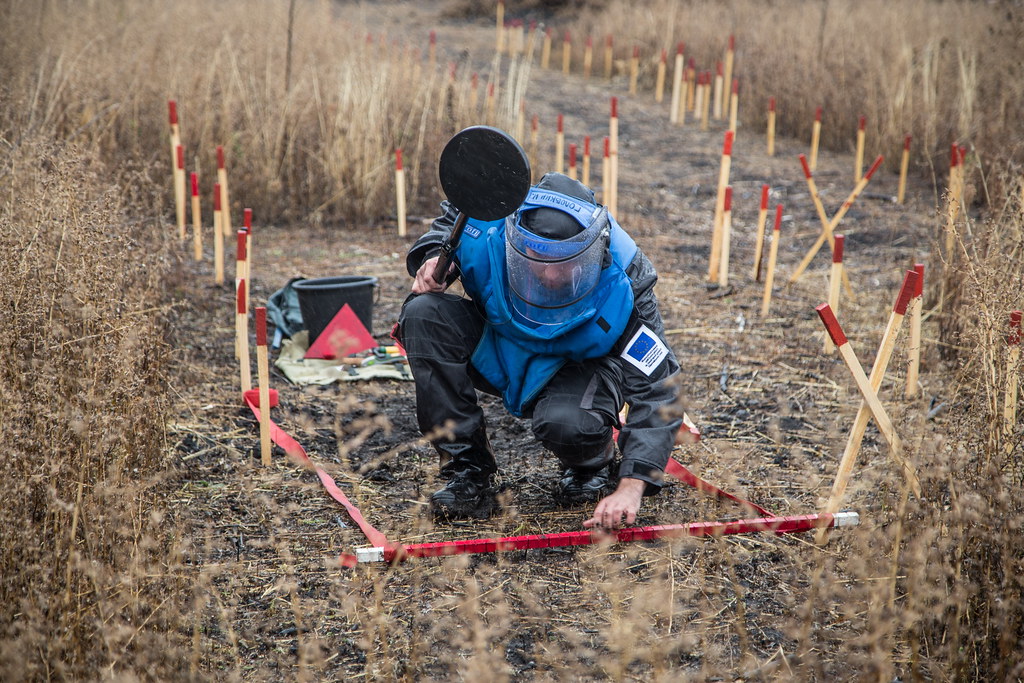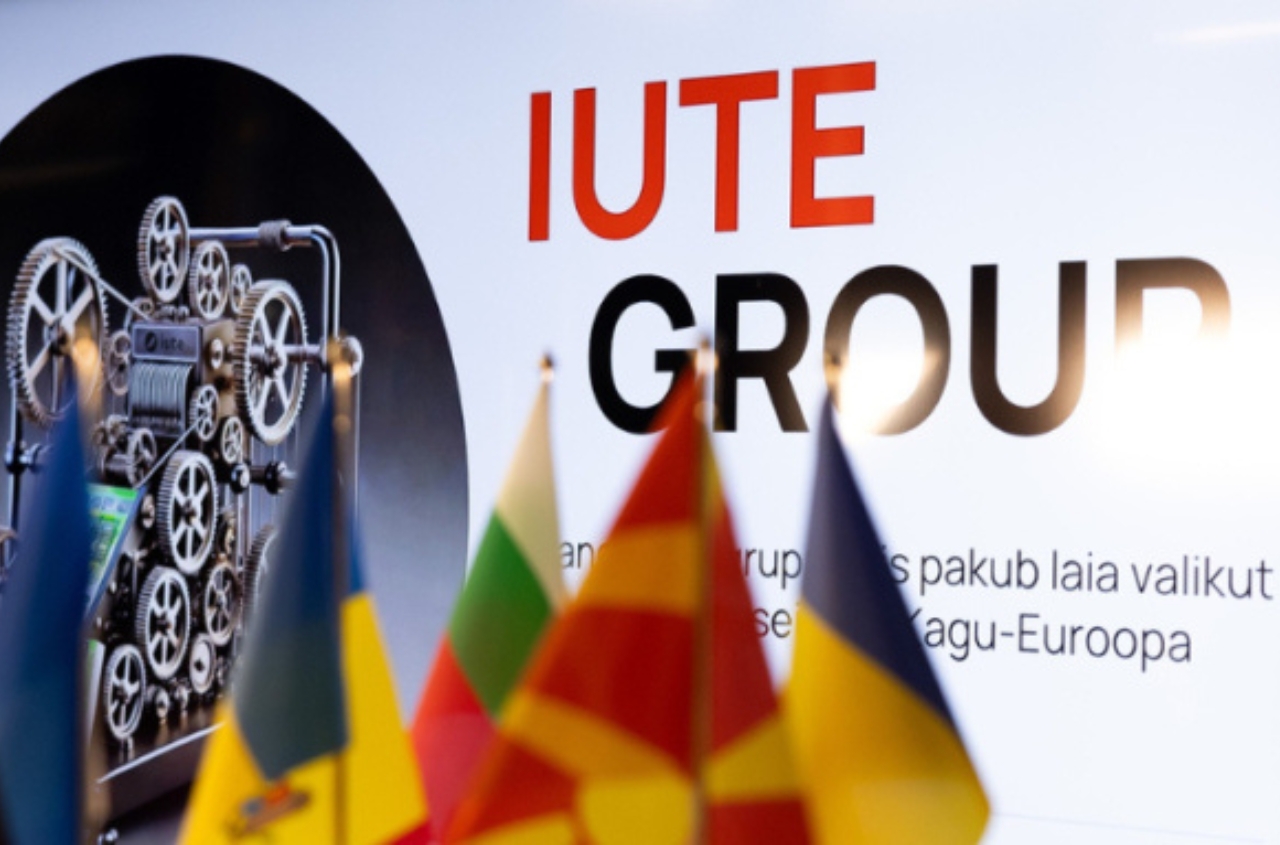Main image: DAKH Vernacular Hardcore, pavilion concept, 2025, visualization. Provided by: Bohdana Kosmina
For the 19th International Architecture Exhibition – La Biennale di Venezia, the Pavilion of Ukraine unveils DAKH (ДАХ): Vernacular Hardcore. Curated by Bogdana Kosmina, Michał Murawski, and Kateryna Rusetska, the exhibition explores the intersection of traditional building methods and improvised construction during wartime crises.
The Pavilion of Ukraine is commissioned by Tetyana Filevska, Creative Director of the Ukrainian Institute, together with co-commissioning institutions, the Ukrainian Institute and RIBBON International. The project is supported by the Ministry for Communities and Territories Development of Ukraine and the Ministry of Foreign Affairs of Ukraine.
“Dakh” in Ukrainian means “roof.” The roof is the most basic form of architecture. It provides shelter from the fickle elements and cocoons the mundane routines of everyday life. But in the perilous conjuncture of full-scale war—a fight fought in large part in the skies, by drones and missiles—the roof also becomes the first point of impact for hostile projectiles.
DAKH: Vernacular Hardcore juxtaposes the “heritage vernacular” of traditional Ukrainian village housing with the “emergency vernacular” of self-organised reconstruction work carried out under wartime conditions.
“We understand ‘hardcore’ in its original sense as a (vernacular) builder’s word, which refers to the assorted bits of debris and clinker that are crunched together to form a building foundation. We appeal for an ethics—and politics—of rebuilding, which is rooted in the fragile, but unyielding, hardcore of the Ukrainian (and planetary) commons; and which makes manifest the structures of care, repair, solidarity—and resistance—that sustain it” explain Bogdana Kosmina, Michał Murawski, Kateryna Rusetska, сurators of the Ukrainian Pavilion.
DAKH blurs the boundary between wartime and postwar reconstruction—highlighting that the process of repair has no choice but to begin while devastation and danger continue to linger; but, also, that long term processes of reconstruction have much to learn from the rooted intelligence of the emergency vernacular.
Furthermore, repair and shelter alone are insufficient. Reconstruction is meaningless without security, and security remains unattainable without resistance. For over a decade, the Ukrainian sky has been subjected to the relentless assault of the Russian war machine. Adequate and sustainable air defence systems remain a distant and seemingly unattainable goal. In response, over thatched, slate, wooden, metal, and concrete roofs—rural and urban, vernacular and prefabricated—Ukrainians assemble a vast, flying, buzzing shelter: a drone canopy.
“Ukraine’s participation in the Venice Architecture Biennale is important for drawing international attention to the country’s reconstruction process after the war, showcasing innovative approaches to rebuilding, and attracting investments and expert support,” comments Volodymyr Sheiko, Director General of the Ukrainian Institute.

“Ukraine is suffering irreparable losses as a result of Russian aggression, but it is also rebuilding very quickly and stimulating innovative approaches to creating a new living environment. This year’s Ukrainian project addresses the most fundamental element of a building—the roof, which often becomes synonymous with the concept of home,” says Tetyana Filevska, Commissioner of the Ukrainian Pavilion and Creative Director of the Ukrainian Institute.
The exhibit comprises six elements:
- The core element is DAKH—a dynamic pre-image of a vernacular Ukrainian roof, conceived by architect and artist Bogdana Kosmina.
- Selected materials from the archive of “Atlas of traditional Ukrainian housing from the late 19th to the mid-20th century” — a 50-year monumental research carried out by three generations of women architects: Tamara, Oksana, and Bogdana Kosmina—served as a foundation for the creation of DAKH. The images from the project directly influenced its form, structure, materiality, and spirit.
- AI avatar of architect and ethnographer Tamara Kosmina (1936–2016), who preserved vernacular architecture through decades of expeditions across Ukraine. The installation reimagines independent technologies by connecting personalized artificial intelligence with cultural heritage. Tamara’s digital persona was developed over a year of work by using the Iris tool (a data-independent AI solution that allows ownership and control of data).
- Documentation of emergency vernacular landscapes of war and repair in the Chernihiv, Kyiv, Kharkiv, Sumy, and Zaporizhzhia regions by reconstruction collectives Livyj Bereh (Ihor Okuniev, Vladyslav Sharapa, and Kseniia Kalmus) and KHARPP (Ada Wordsworth).
- Places: Mykolaiv Region, a photographic exploration of war-dehydrated landscapes by artist and writer Yevgenia Belorusets. The work highlights this interdependence through a project dedicated to Mykolaiv Water Utility workers, who have fought since 2022 to sustain water flow in systems devastated by Russian attacks—a crucial lifeline for one of Ukraine’s major cities. Just as roofs shelter above, functioning utilities are the foundation below.
- Drone Canopy—an immersive sound installation, curated by Clemens Poole, inspired by and summoning the power of Klyn, a grassroots drone-building initiative led by Kseniia Kalmus.
DAKH (ДАХ): Vernacular Hardcore will be accompanied by Planetary Hardcore—a nomadic public program, launching on 10 May at the Scuola Grande di San Marco in Venice, and moving later to locations in Ukraine (Kyiv, Dnipro) and beyond. The goal of Planetary Hardcore is to build connections between Ukraine and other places in which kindred labours of self-organised repair and reconstruction coalesce in the midst of war.
The pocketbook guide to the pavilion, DAKH (ДАХ): Mini-Atlas of the Vernacular Hardcore, will be published in May 2025.

NOTES TO THE EDITOR:
Exhibition title: DAKH (ДАХ): Vernacular Hardcore
- Commissioner: Tetyana Filevska, Creative Director of the Ukrainian Institute
- Curators: Bogdana Kosmina, architect; Kateryna Rusetska; Michał Murawski
- Architects & ethnographers: Oksana Kosmina, Tamara Kosmina
- Producer: Ilona Demchenko
Project team: Yevgenia Belorusets (artist/consultant); DRONES FOR DRONES, a series of drone music compilations, curated by artist Clemens Poole for Kyivpastrans Records and released in collaboration with Fallout Noise volunteer collective; Vladyslav Sharapa (artist/consultant); Kseniia Kalmus (artist/consultant); Ihor Okuniev (artist/consultant); Ada Wordsworth (artist/consultant); Clemens Poole (sound curator) and Dmytro Vortman (cartographer)
- Date: 10 May — 23 November 2025
- Venue: Arsenale, Sale d’Armi, building A, 1st floor
For the next six years, the Ukrainian Institute will serve as the commissioner of the Ukrainian pavilion at the International Architecture Exhibition of La Biennale di Venezia, supported by the Ministry for Communities and Territories Development of Ukraine and the Ministry of Foreign Affairs of Ukraine.
Partners: Roberto Bianconi Atelieritaliano, Comune Di Venezia, Thetis, Scuola Grande San Marco
ABOUT RIBBON INTERNATIONAL:
RIBBON International is a platform supporting historic and contemporary Ukrainian arts and culture in the form of exhibitions, artist commissions, public programs and grants. RIBBON runs through Ukraine by way of its railway system and aims to provide support to the endangered legacies of Ukraine’s cultural and artistic heritage, as well as to artists, cultural producers, contemporary culture and institutions throughout Ukraine in their fight for cultural autonomy.





















